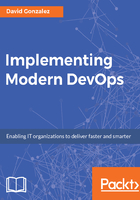
Chain of communication
I remember that when I was a kid, we used to play a game called the crazy phone. Someone would make up a story with plenty of details and write it down on paper. This person read the story to another person, who had to capture as much as possible and do the same to the next person, up until we reached the end of the number of people playing this game. After four people, it was almost guaranteed that the story wouldn't look anywhere close to the initial one, but there was a more worrying detail: after the first person, the story would never be the same. Details would be removed and invented, but things would surely be different.
This exact game is what we are trying to replicate in the waterfall model: people who are working on the requirements are creating a story that is going to be told to developers, who are creating another story that is going to be told to QA so that they can test that the software product delivered matches with a story that was in two hands (at the very least) before reaching them.
As you can see, this is bound to be a disaster but hold on, what can we do to fix it? If we look at the traditional industry, we'll see that they never get their designs wrong or, at least, the error rate is very small. The reason for that (in my opinion) is that they are building tangible things, such as a car or a nuclear reactor, which can easily be inspected and believe me or not, they are usually simpler than a software project. If you drive a car, after a few minutes, you will be able to spot problems with the engine, but if you start using a new version of some software, it might take a few years to spot security problems or even functional problems.
In software, we tried to ease this problem by creating very concise and complex diagrams using Unified Modeling Language (UML) so that we capture the single source of truth and we can always go back to it to solve problems or validate our artifacts. Even though this is a better approach, it is not exempt from problems:
- Some details are hard to capture in diagrams
- People in the business stakeholders do not understand UML
- Creating diagrams requires time
Particularly, the fact that the business stakeholders do not understand UML is the big problem here. After the capture of requirements, changing them or even raising questions on lower levels (development, operations, and so on) requires involving some people, and at least one of them (the business stakeholder) does not understand the language of where the requirements were captured. This wouldn't be a problem if the project requirements were spot on since the first iteration, but in how many projects have you been involved where the requirements were static? The answer is none.